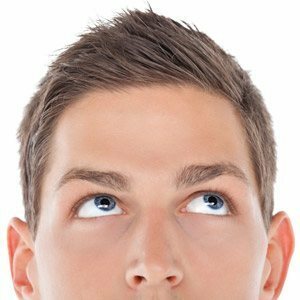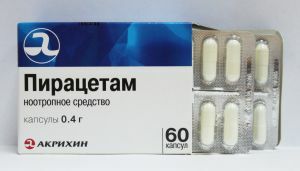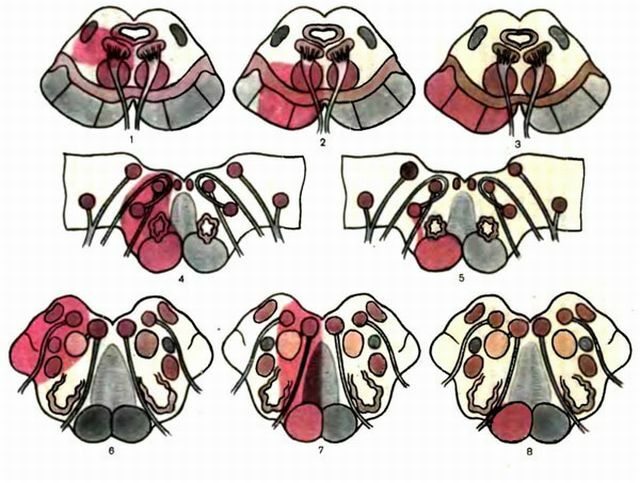 Spasm of the eye or oculogic crisis is a dystonic reaction of the human body to a certain disease or medication.
Spasm of the eye or oculogic crisis is a dystonic reaction of the human body to a certain disease or medication.
Expresses a state of involuntary eye deviation. Another name for the phenomenon is the deviation of the eyes. Eyeballs deviate, more often, upwards and laterally, and in more rare cases downwards. This is not an independent disease, but rather a symptom of a neurological disease. Often manifested in tandem with torticollis or blepharospasm.
Causes and a risk zone
Often spasm of the eye is a consequence of taking certain medications, such as:
- some antipsychotics for the treatment of paranoid schizophrenia;
- Reserp;
- Pimolin;
- Domperidone;
- Carbamazepine, etc.
In addition to drugs, the following neurological diseases can cause this syndrome:
- Parkinson's disease;

- Tourette syndrome;
- Alzheimer's disease;
- heavy syphilis;
- Rett syndrome;
- traumatic brain injury;
- jaundice of severe form.
Symptomatic
The spasm of vision is visually visible, so patients usually do not delay visiting a doctor. Getting rid of this kind of syndrome is engaged specialist neuropathologist. The deviation of the eye occurs in an osseous with important symptoms:
- convulsions of the masticatory muscles with severe pain;
- increased blood pressure and pulse;
- migraine and confusion;
- dizziness;
- obsessions and paranoia;
- is depressed;
- mutism;
- personality decay;
- severe mental disorders.
At the very beginning of the manifestation of the syndrome, the patient may notice a brief immobility of view. This will be accompanied by tachycardia and a sense of anxiety.
 After this, the deviations of the eyes directly begin to rise. This can happen for a few minutes, and sometimes for several hours.
After this, the deviations of the eyes directly begin to rise. This can happen for a few minutes, and sometimes for several hours.
At the time of the crisis, a person feels pain in the eye area and involuntarily throws back his head. Breathing at this time becomes more frequent, the skin of the face turns red and tears are prominent.
To formulate a therapy plan, the doctor will need to find out the cause of the oculogic crisis. If you eliminate a provoking disease or stop taking a certain drug, this crisis can pass without a trace.
In life it looks like this:
Statement of diagnosis
After contacting a neurologist, the patient will need to go through a series of diagnostic procedures. First of all, you will need to answer a number of questions from the doctor and allow him to conduct a qualitative examination.
Detection of any neurological disease is not without laboratory tests of blood. We are talking about general and biochemical analyzes. In some cases, it may be necessary to consult a psychiatrist and an expert in narcology.
The following diagnostic methods will also be assigned to the patient:
- ECG;
- CT of the brain;
- EEG;
- MEHO and other brain and blood flow studies;
- in some cases may require X-rays, ultrasound of vessels and Doplerography.
Medical care
After the cause of the abnormal eye deviation has been identified, the therapist will make up the therapy. Depending on the severity of the detected disease, the duration of treatment will also vary. Usually it is 2-3 weeks and repeated after 10-15 days.
Modern medicine makes an "emphasis" on drug therapy, which, in this case, will be made up of nootropics,  tranquilizers, sedatives and vasoconstrictors. The course of admission varies from 7 to 14 days.
tranquilizers, sedatives and vasoconstrictors. The course of admission varies from 7 to 14 days.
Tranquilizers are not recommended for taking longer than 5-6 days, as they can be addictive. Some patients may require hospitalization if the psychiatrist is diagnosed with a mental disorder.
A topical and effective method of treatment is psychotherapy. Conversations with a psychiatrist will allow a sick person to adapt socially and return a confident view of the future, goals and optimism. In the meantime, physiotherapy can be prescribed. Electrophoresis, magnetotherapy and other techniques will restore the blood supply to the brain. The number of procedures is 8-10.
Treatment with folk remedies is aimed, to a greater extent, at normalizing the psychoemotional state of a person. Apply infusions on pine nuts, broths of chamomile, lemon balm, hawthorn. Soothing soothing baths with fir, citrus and bergamot oil are also very important. Fundamental is still medical treatment.
The oculogic crisis is an unpleasant and intractable phenomenon, as it requires extremely thorough diagnosis. Self-medication can aggravate the course of the disease. In the risk zone people of retirement age and patients with craniocerebral trauma. The full course of therapy takes at least six months and a complete cure is not always possible.



